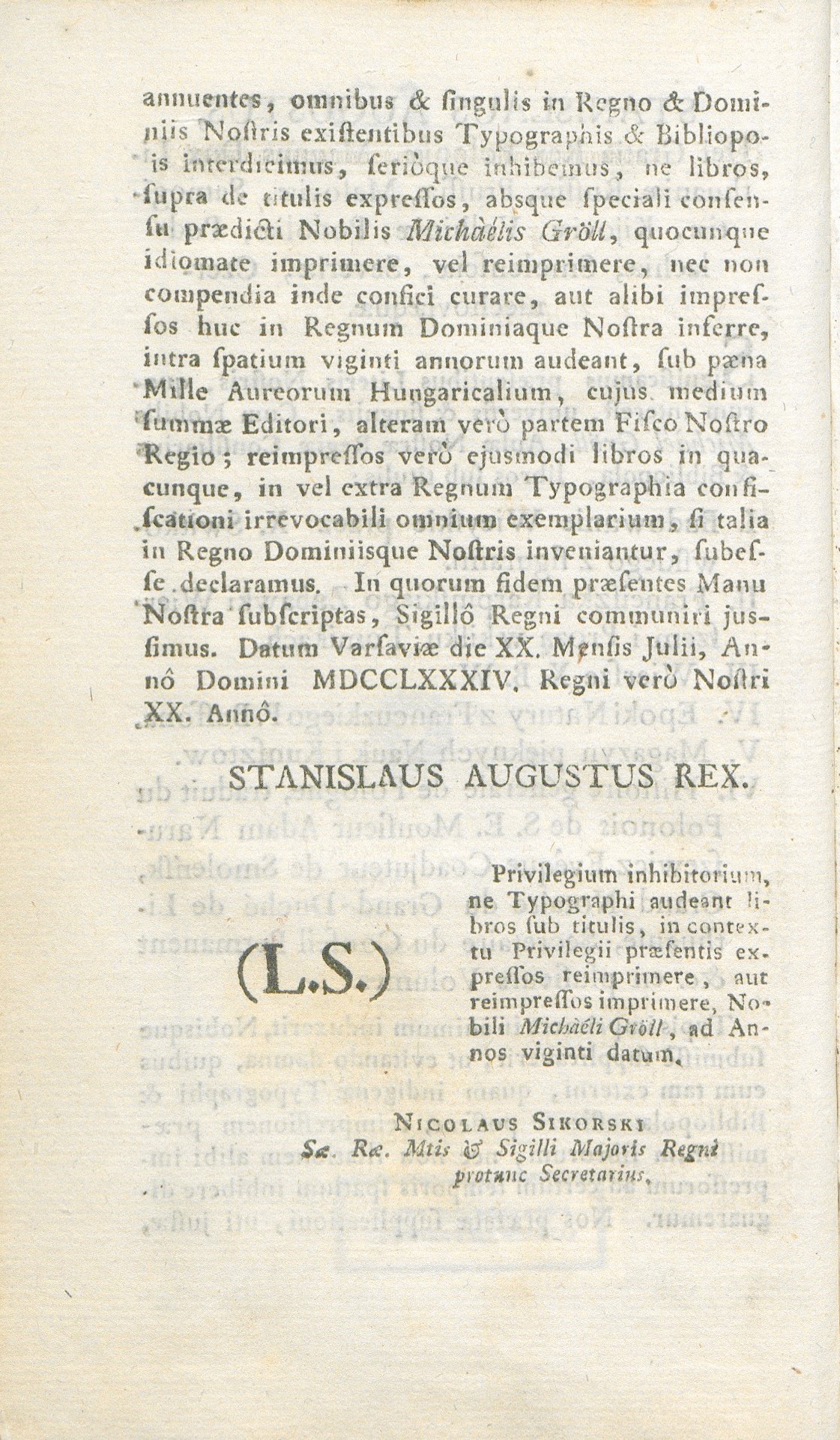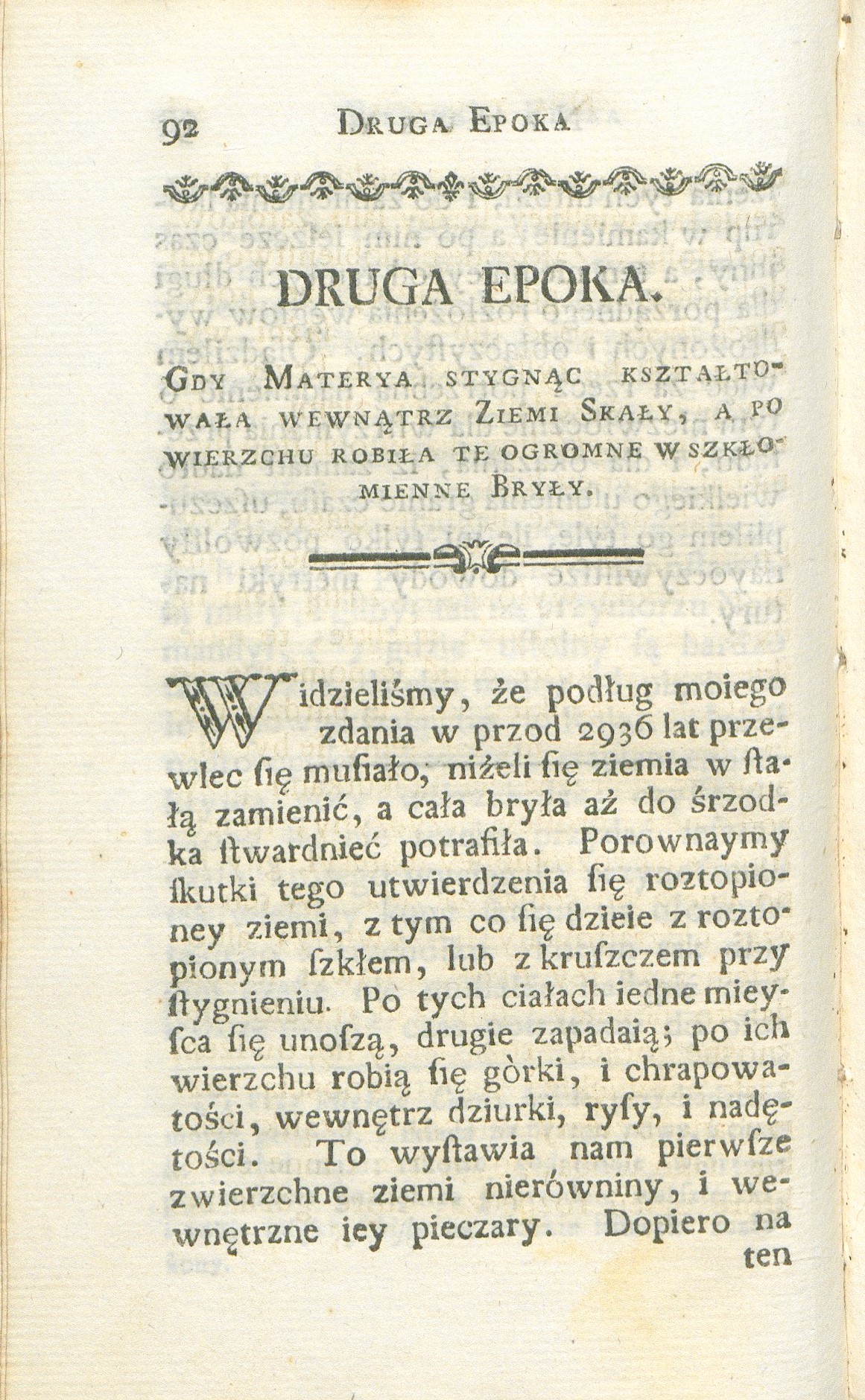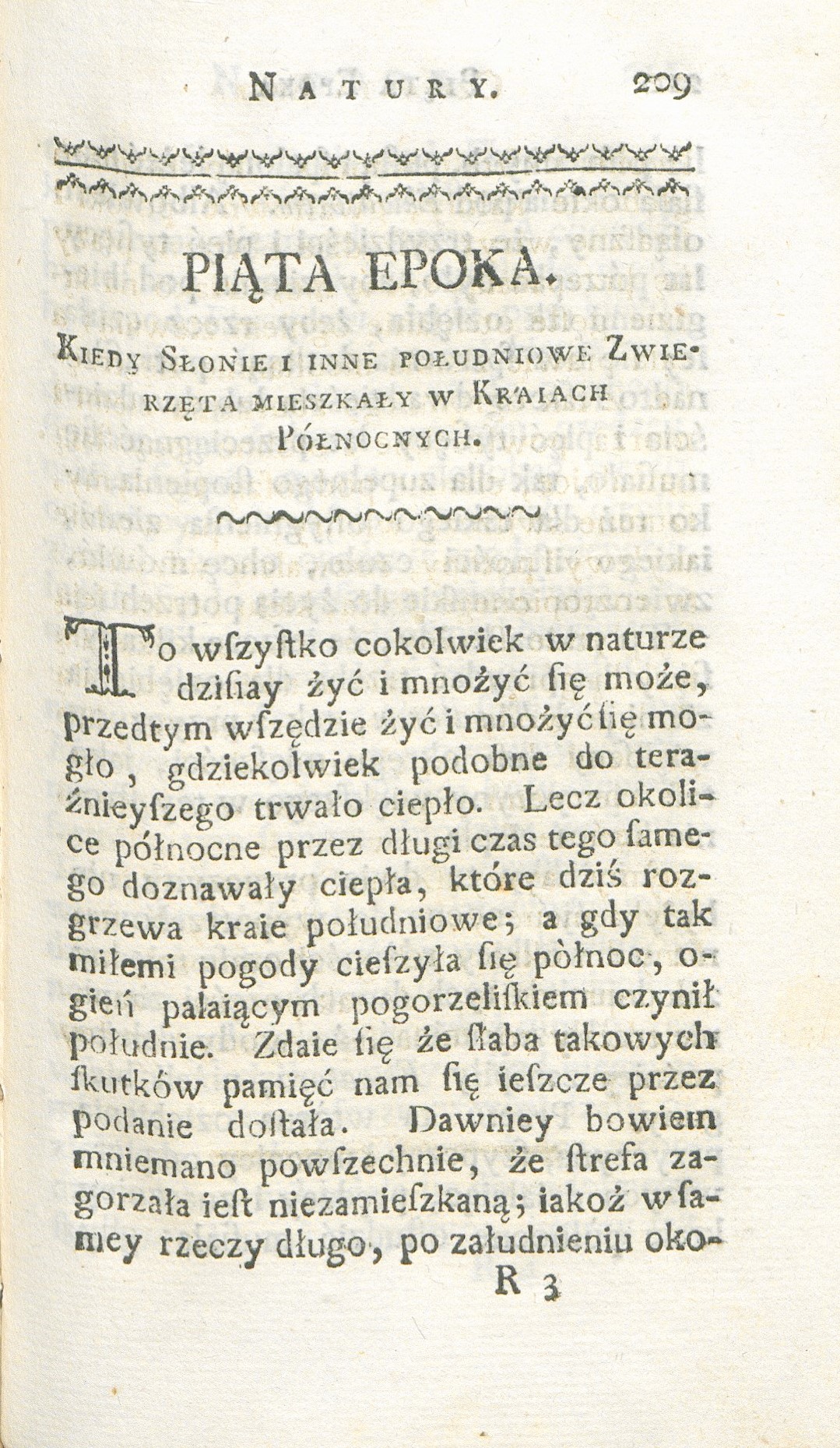There are two valuable collections in the library's collection: old prints (828 volumes from the 16th-18th centuries) and 19th-century polonica (about 8200 volumes), which make up the National Library Resource. Here we would like to present to you the most interesting and valuable collections that the library has in its collection. We also invite you to visit the Library of the NIKIDW Branch in Pulawy, where readers can directly acquaint themselves with selected titles.
***
Buffon, Georges Louis Leclerc
"Epochs of Nature"
Warsaw, 1786.
The earliest history of our planet still holds many secrets. However, we are able to reconstruct both the appearance of the Earth and the entire solar system to a very close approximation. The controversy over the great bombardment of cosmic matter, the formation of the crust and oxygen atmosphere, as well as the oldest traces of life well demonstrate how little we still know about the origin of our mother nature - Earth.
Wśród bogatej literatury opisującej procesy powstawania i ewolucji Ziemi w Bibliotece Narodowego Instytutu Kultury i Dziedzictwa Wsi na szczególną uwagę zasługuje książka Georgesa-Louisa Leclerca, Comte de Buffon – „Epoki natury” z 1786 roku.
The author was one of the first scientists who tried to look for natural, non-religious explanations for the formation of the Solar System. According to his hypothesis, the Earth and other planets were formed by the collision of the Sun with a large comet. From the shreds of solar matter torn out at that time, planets formed after solidifying. The fundamental flaw in this theory was the overestimation of the capabilities of comets, since their mass is too small.
Georges-Louis Leclerc, Comte de Buffon (1707-1788) - French philosopher, naturalist and mathematician. Member of the French Academy. In 1749, he published the first volume of Histoire Naturelle (Natural History) jego autorstwa. Liczącemu 44 tomy, a zakończonemu w 1788 roku dziełu przypisano tytuł pomnika literatury języka francuskiego i uznano za jedno z najważniejszych dzieł historii nauk przyrodniczych. Autor przedstawił w nim koncepcje pochodzenia układu słonecznego, początków Ziemi, zawarł opis dawnej i współczesnej fauny i flory, a także syntezę ówczesnej wiedzy geologicznej. Ta wielotomowa encyklopedia przyrodnicza została napisana znakomitym stylem. Kilkanaście tomów Histoire Naturelle Buffona znajduje również w zbiorach Biblioteki Narodowego Instytutu Kultury i Dziedzictwa Wsi.
Naturelle (Natural History) jego autorstwa. Liczącemu 44 tomy, a zakończonemu w 1788 roku dziełu przypisano tytuł pomnika literatury języka francuskiego i uznano za jedno z najważniejszych dzieł historii nauk przyrodniczych. Autor przedstawił w nim koncepcje pochodzenia układu słonecznego, początków Ziemi, zawarł opis dawnej i współczesnej fauny i flory, a także syntezę ówczesnej wiedzy geologicznej. Ta wielotomowa encyklopedia przyrodnicza została napisana znakomitym stylem. Kilkanaście tomów Histoire Naturelle Buffona znajduje również w zbiorach Biblioteki Narodowego Instytutu Kultury i Dziedzictwa Wsi.
"Epochs of Nature" was intended as an ambitious project to present the "true history of nature" and to summarize all that Buffon had written before. It was also an attempt to explain the origin and history of our planet. For its purpose, the author conducted many experiments, measuring the cooling rate of iron spheres, which were to make it possible to determine the age of the Earth. His theory was based on scientific criteria and experiments and laboratory tests. Buffon wrote in the book that, in order to "describe what happened one must take into account what is happening."
 The publication of "The Epic of Nature" in 1778 coincided with his first arrival in France to study Stanislaw Staszic, who decided to translate the newly published publication into his native language, although he basically decided that the theory presented in it was inconsistent with reality. The first edition was published in Poland in 1786, followed by others in 1803 and 1816.
The publication of "The Epic of Nature" in 1778 coincided with his first arrival in France to study Stanislaw Staszic, who decided to translate the newly published publication into his native language, although he basically decided that the theory presented in it was inconsistent with reality. The first edition was published in Poland in 1786, followed by others in 1803 and 1816.
In the introduction to the Polish edition, Stanislaw Staszic writes about the great pedagogical value of "The Epic of Nature." He calls it a book that makes you think, while emphasizing the great talent of its author, who entertains-teaches.
In France, the work was highly attacked by the church, especially the consideration of the age of the Earth, incompatible with the biblical vision of the beginning of the world. In Poland, paradoxically, the secular publication was translated by Father Stanislaw Staszic, who embodied the principles of scientific and educational policy. The book developed the clergyman's interest in geology and was a direct impetus for his own research in this field.
"Epochs of Nature" and its translations into various languages played a huge role for the development of natural sciences in the various countries of Europe and the world. Polish scholars used Buffon's works in building the foundations of modern natural, geographical and biological sciences.
The work is a description of the Seven Epochs, with an introduction - Interpreter's Thought - by Stanislaw Staszic with "an addition of thoughts and some remarks." The 323-page book was published in Warsaw by and printed by Michal Gröll in 1786.
Publikacja jest dostępna w Bibliotece Narodowego Instytutu Kultury i Dziedzictwa Wsi w formie elektronicznej i przechowywana w oryginale w wersji papierowej w Bibliotece w Puławach.
Elaborated. Boguslaw Wisniewski
Editor. Joanna Radziewicz
Photo polona.pl - public domain
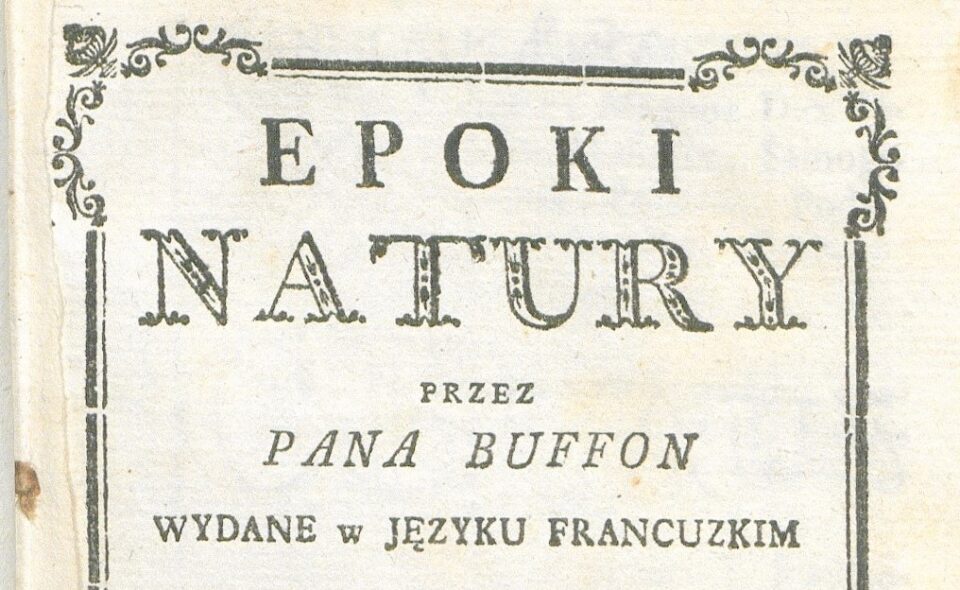
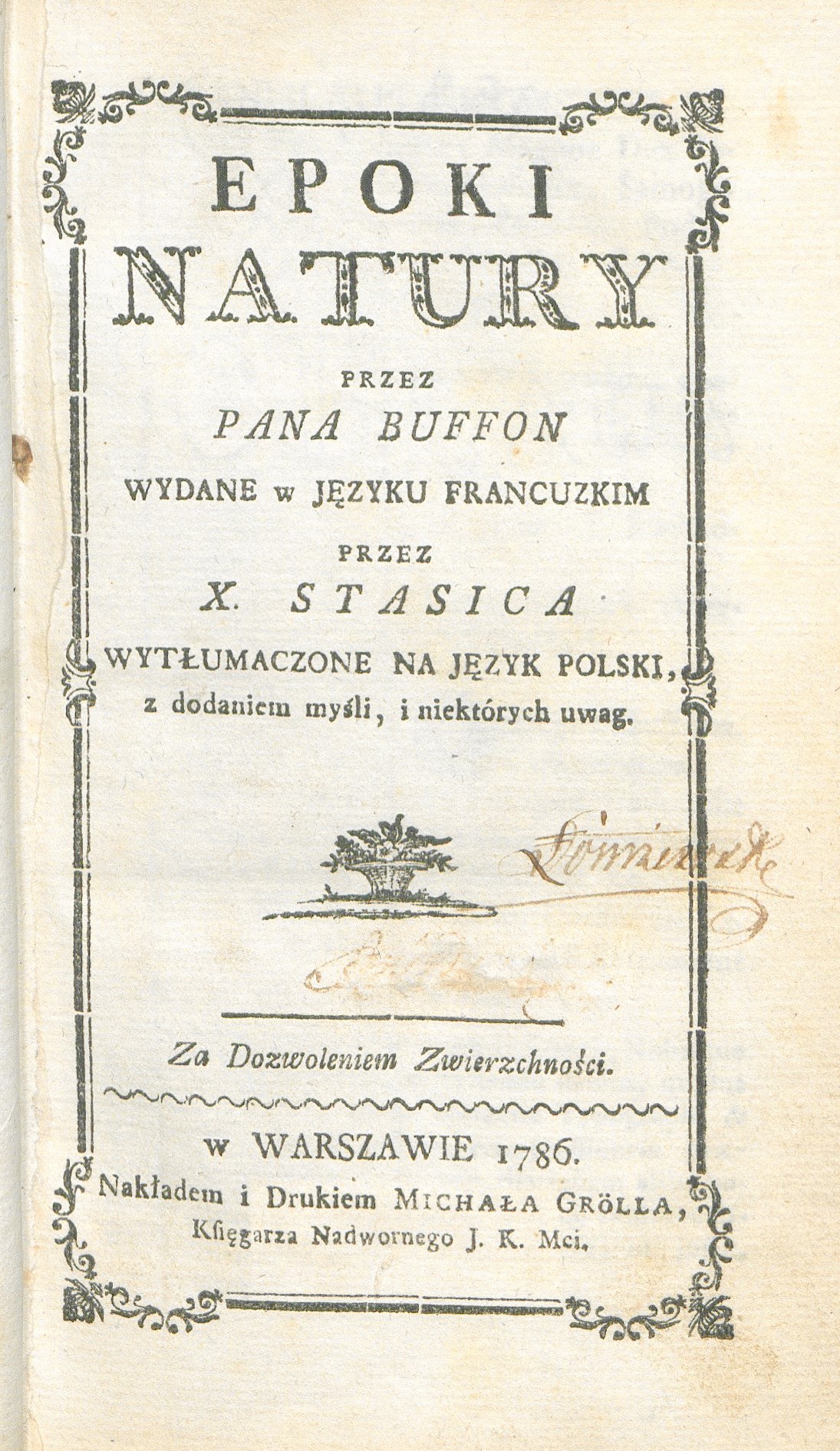 \
\
